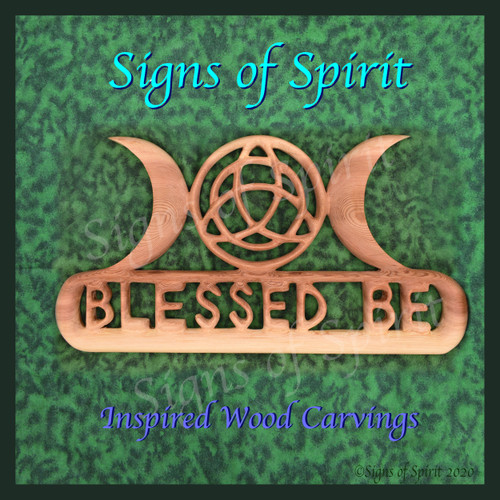MEANING: Stone carvings of Thor's Hammer date as far back as the 10th century. Thor's Hammer, Mjollnir, would never break or miss it's target, and would always return to Thor's hand. It rids the world of monsters and giants, protects the homes of both Gods and men and is a device of consecration and magic. Distinctively shaped, Mjollnir is depicted in Norse mythology as one of the most fearsome weapons, capable of leveling mountains. Though generally recognized and depicted as a hammer, Mjollnir is sometimes referred to as an axe or club. Myths, artifacts, and institutions revolving around Thor indicate his prominent place in the mind of medieval Scandinavians. His following ranged in influence, but the Viking warrior aristocracy were particularly inspired by Thor's ferocity in battle.
THE CARVING: Our carvings are single pieces of western red cedar, designed and carved to be wall hangings. Each carving begins as a 1 X 12 inch cedar board. While we use power tools (Scroll Saw, Rotary shaft Tool, handheld detail sanders etc.), we use no laser’s, CNC machines or computer operated cutting machines. All work is done with our hands and eyes…
We cut the 2 dimensional blanks with scroll and jig saws (double-sized custom orders have to be cut with jigsaw). Carving is done with rotary shaft tools and disc grinders. The 80 grit sanding is the final phase of the carving process, removing the nicks and gouges from the carving tools, and finishes the shaping of the weave. The next 2 sandings with 120 then 220 grit finishes the smoothing and polishing. They are finished with Clear Danish Oil to seal the piece, bringing out the grain and the color.
SIZE: One picture has the piece on a quilting board, lined up on the 1 inch marks. The quilting board, at its simplest, is a one inch grid. So with the piece on the board, you look at the top and follow the line to the left and look at the right side at the widest point and follow the line to the bottom and you have height by width...but wait! It's not that easy! The way this board I have is laid out, if I lined it up on the zero points it would cover up the numbers and on some pieces you wouldn't be able to see them...so, I line it up on the 1 inch marks which means when you get the numbers, you have to subtract 1 inch... TA DA! Measurements may vary slightly from piece to piece.












